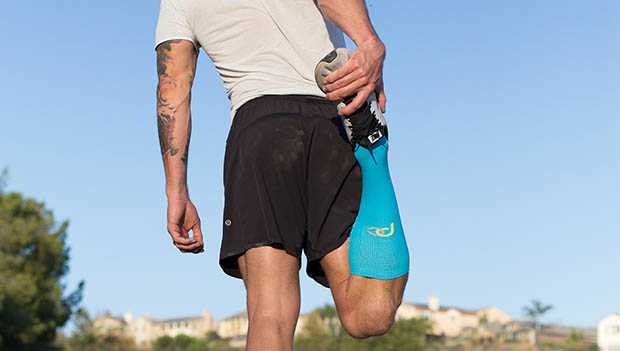
Working out is important. It gets your body in shape, builds strength and tones muscles. But it's important to know when to rest so you don't overwork those muscles, as well as to make sure you get the recovery your body needs to replenish after a workout.
Failure to properly cool down after a workout is bad for your body due to the possibility of injuries; plus if you don't give yourself a break to rest, you won't be rebuilding muscle and healing tissue and your performance can decline because of it. Good athletes know that how you slow down following a workout is just as important as the warmup you do beforehand.
PRO Compression knows all about recovery and is sharing tips to help athletes reach and keep their potential through recovery methods following a workout.
Below you'll find five great exercises to promote cooling down after a workout and healthy recovery of your important muscles. This will keep you in tip-top shape and lessen the risk of injury.
Active Recovery
Active recovery involves engaging in low-intensity exercise immediately after participating in a heavy workout. Active recovery allows your muscles to "gradually" slow down rather than rest all at once. This technique helps your body alleviate the stress of intense exercise and steadily cool down. It also reduces the amount of lactic acid in the muscles, alleviating pain and stiffness.
Additionally, active recovery exercises may help avoid the crash or depressive mood some athletes find themselves in following a high-intensity event, and it levels out heart rates so there are no sudden stops or starts. Cardiovascular health is important, too, and should not be ignored when working out and slowing down. The American Heart Association recommends taking a few minutes to slow down after fast-paced walking or running so you don't shock your heart from sudden cessation of exercise.
Protein Needed
The American College of Sports Medicine and other credible organizations have stated that the average adult needs around 0.8g of protein per kilogram of body weight each day for optimal strength and health. But athletes need more due to the amount of exercise they do.
The American Dietetic Association recommends 1.2 to 1.4 grams per kilogram of body weight for active sports athletes. If you are undergoing resistance and strength training, you may need more.
Protein is vital in repairing muscles and replenishing energy lost during a workout, so aim for these target goals of protein intake each day. Do your homework and choose a quality source of protein based on your dietary requirements and preferences.
Branch Chain Amino Acids
Another helpful supplement to include is Branch Chain Amino Acids (BCAAs) following a workout. BCAAs are known to replenish energy, decrease muscle fatigue and alleviate muscle soreness that is often experienced with a vigorous sports workout routine.
You need to allow your body to gradually return to a resting state, and BCAAs help you achieve this.
Use Compression Socks
Compression socks, often prescribed for people with diabetes suffering from edema of the legs and feet, are also helpful after long runs and intense workouts. The continued use of compression socks as a part of recovery following a workout has been shown to reduce the swelling of the feet and legs and improve circulation in the affected areas. It also reduces soreness in muscles that were stretched during the intense workout. You can buy compression socks online or search for them at your local health and fitness store to determine the height of sock and pressure level that is right for your recovery needs.
Stretching Exercises
Stretching helps reduce soreness and stiffness following a workout, restores range of motion in your muscles, builds long term flexibility and prepares you for your next workout. Stretching also helps even out your muscles and keeps them in the best condition without overusing them.
There are a number of things you can do to keep your muscles and your entire body in the best condition. Using active recovery techniques, eating enough protein, adding BCAAs to your regimen and caring for your muscles post-workout will help reduce your recovery time and better prepare you for your next workout. And don't forget to always begin and end exercise with stretching exercises to keep your muscles in the best shape possible.
Taking care of your body is about more than high-impact workouts. It's also about how you cool down afterward so you exercise safely and help your body recover naturally. That way, you'll be in the best condition for your next workout and you'll stay on top of your game!
READ THIS NEXT: Ways to Sneak in Recovery Throughout the Day


